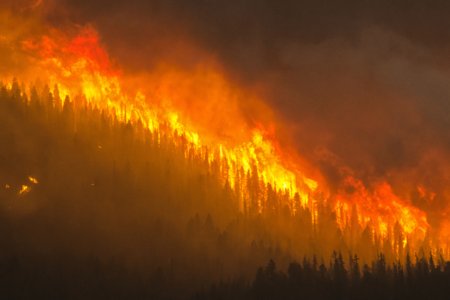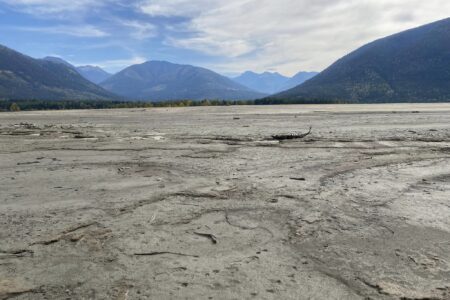Hurricane Irene and the staggering costs of climate change
By Richard Matthews
Extreme weather events like Hurricane Irene illustrate the costs of man’s impact on the earth.
The planet has been getting warmer since the dawn of the industrial age and for every one degree rise in temperature, moisture rises by seven per cent.
Scientists predict that warmer temperatures will increase the frequency and severity of extreme weather events. Or to put it another way, global warming amplifies the risk factors for extreme weather events.
Guided by its research, the insurance industry expects that extreme weather events will become routine.
But not everyone is guided by rational enquiry; there are many other Americans who are still confused about the scientific veracity of climate change.
Although scientists are reluctant to make definitive statements, in 2011, most will agree that there is a strong and growing body of evidence supporting the existence of anthropogenic global warming.
In Scientific American, John Carey explains it this way, ”Until recently scientists had only been able to say that more extreme weather is ‘consistent’ with climate change caused by greenhouse gases that humans are emitting into the atmosphere.
Now, however, they can begin to say that the odds of having extreme weather have increased because of human-caused atmospheric changes—and that many individual events would not have happened in the same way without global warming.”
Hurricane Irene illustrates that extreme weather can be very costly. Raging rivers continue to cause record flooding all across the north-eastern United States and electricity companies are struggling to restore power to millions homes and businesses. In addition to the economic costs, at least 38 people died in the US before Irene crossed into eastern Canada.
What makes Irene noteworthy is not its severity, but its location. Landlocked Vermont is not a place normally associated with a tropical storm, yet floodwaters surged through that state and many others in the East.
For Vermont, these were the worst floods in 83 years. In addition to washing out roads and destroying buildings, Irene forced the temporary closure of several power plants. Airlines said they were forced to cancel 12,000 flights, a record for the industry and Manhattan took the unprecedented step of halting all public transportation.
Floods are a potential environmental health hazard even after the waters recedes. Floodwaters carry toxic waste, animal remains, and sewage, creating an aggressive breeding ground for mold and bacteria.
The exact cost of Irene is not yet known, but so far the financial toll of Irene is up to $7 billion nationally, with insured losses of between $3 and $4 billion. The costs begin to accrue in a significant way when extreme weather events become climate disasters.
This year (2011) is already the most expensive year ever for extreme weather in the U.S. and the hurricane season is not yet half over. Hurricane Irene will help push the 2011 climate disaster costs past the previous record of 35 billion set in 2008.
This year, there have been ten separate disasters that caused an economic loss of $1 billion or more in the U.S, beating the record set in 2008. “The “new reality” is that both the frequency and the cost of extreme weather are rising, making the nation more economically vulnerable and putting more lives and livelihoods at risk” the NOAA’s Hayes said.
John L. “Jack” Hayes is the National Oceanic and Atmospheric Administration (NOAA) Assistant Administrator for Weather Services and the National Weather Service (NWS) Director.
According to property and casualty reinsurer Munich Reinsurance America, the number of U.S. natural disasters has tripled in the last 20 years and 2010 broke records with about 250. Average thunderstorm losses have increased five-fold since 1980. For the first half of 2011 there have been $20 billion in thunderstorm losses, double the previous three-year average of $10 billion, NOAA said.
“I don’t think it takes a wizard to predict 2011 is likely to go down as one of the more extreme years for weather in history,” Hayes said. There is more bad weather to come according to NOAA, which has predicted there will be as many as 19 tropical storms this year. So far there have been eight.
There is widespread agreement that the cost of the financial crisis of 2007/8 was monumental, but far too few are concerned about the costs associated with anthropogenic environmental damage.
According to a study released by the UN-backed Principles for Responsible Investment (PRI) and UNEP Finance Initiative, global environmental damage caused by human activity in 2008 represented a monetary value of $ 6.6 trillion, equivalent to 11% of global GDP. Those global costs are 20% larger than the $ 5.4 trillion decline in the value of pension funds in developed countries caused by the global financial crisis in 2007/8.
As noted in the UNEP Finance Initiative report titled “Putting a Price on Global Environmental Damage,” “environmental harm could affect significantly the value of capital markets and global economic growth.”
The report also estimates that global environmental damage will cost $28 trillion by 2050. The report further indicates that number could be reduced by 23 percent if clean and resource-efficient technologies are introduced.
Paul Clements-Hunt, Executive Director, UNEP Finance Initiative, said:
“This report sends a powerful message that the environment is also the business of business. Polluters must pay. Safeguarding the environment and using our natural assets efficiently entail collective action. Cohesive policy and regulation is required to fully account for externalities and speed up the integration of material environmental issues into investment decisions. The bottom line is that if we are to achieve a sustainable global economy, then we must stop drawing down our natural capital.”
The study recommends investors should exercise their ownership rights, collaborate to encourage companies and policy-makers to reduce these environmental externalities, and request regular monitoring and reporting from investment managers on how they are addressing exposure to environmental risk.
James Gifford, Executive Director, UN-backed Principles for Responsible Investment, said:
“An increasing number of large investors are recognising that environmental externalities generated by one company are likely to come back and hit their portfolios in another place or time. This report provides an important rationale why investors need to exercise leadership and responsible ownership by acting together to reduce corporate externalities.”
The financial implications of extreme weather are too great to be ignored, particularly when we factor in loss of productivity and ancillary costs like increased insurance premiums.
Storms, floods, tornadoes and heat waves are the corollaries of global warming and as recent events illustrate, some of these extreme weather events incur staggering costs. We need fiscal responsibility, but surely that includes investments which reduce the crippling costs of climate disasters.
Richard Matthews is a consultant, eco-entrepreneur, green investor and author of numerous articles on sustainable positioning, eco-economics and enviro-politics. He is the owner of THE GREEN MARKET, a leading sustainable business blog and one of the Web’s most comprehensive resources on the business of the environment.
























Comments